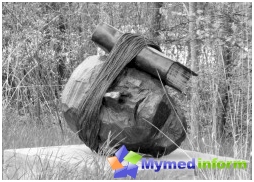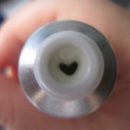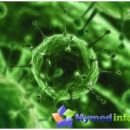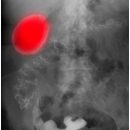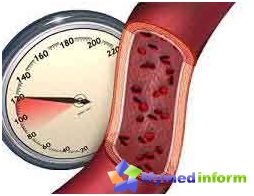
Hypertensive disease is a constant or periodic increase in blood pressure (AD). What is dangerous hypertension? The fact is that blood vessels that permeate all organs and systems of our body have a certain pressure - this is the force with which the blood pressure on the walls of the vessel.
Everyone knows that when measuring blood pressure, two indicators are used, for example 120/80. First digit - systolic pressure, t.E. Pressure on the wall of the vessel after cardiac abbreviation. The second digit is a diastolic pressure, blood pressure indicator on the wall of the vessel in the break between cardiac abbreviations. What pressure is considered normal? If a person is calm, its blood pressure should not exceed 140/90 - this is the upper limit of the norm.
Causes of hypertension
Often the reason for the short-term rise of the pressure is stress, a sudden fright (a man was for bread, and his car almost hit - the experienced fear makes the adrenal glands to throw a fairious portion of adrenaline into the blood, the blood fills the vessels, the person rises rapidly and as a result, the pressure rises). If a person has good health, the pressure quickly returns to normal.
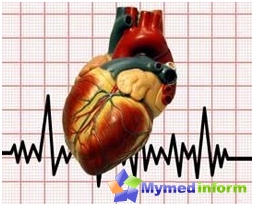
However, constant stress provoke frequent pressure rises, and gradually for the body increased pressure becomes «norm». For example, a person works on a senior position, constantly drives on a business trip and feels fine. However, if systematically measured pressure, it turns out that its «Normal» The pressure has long been 120/80, and 140/90... Its vessels have already adapted to high pressure, which is not normal - this is the initial stage of chronic hypertensive Diseases. At this stage, a person is experiencing periodic headaches, Feeling of gravity in the head of the head, short-term greetings, occasionally pain in the heart.
But the most important cause of hypertension is hereditary predisposition - if your parents sick hypertension, your chance to get sick increases. Even if there is no hereditary predisposition, the hypertension can be purchased independently: smoking, alcohol abuse, overweight, hypodynamine, and, as already mentioned, frequent stresses are also promoted by the development of hypertension.
In addition, our site would like to recall that the abuse of the pressure contributes to the rise of pressure (and which of us does not like salt tomatoes cucumbers, salt fish - herring, Wobble, and DR.). Salt causes an increase in the volume of circulating blood and increases the sensitivity of the walls of the vessels to the vasoconductive factors.
Stages of the disease
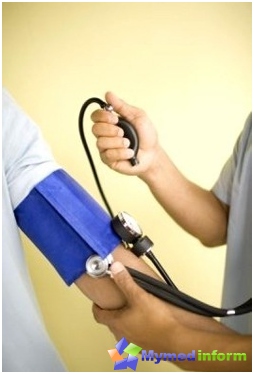
In order to diagnose, it is necessary to provide a doctor data on its arterial pressure for a while. If you suspect a hypertension, our site recommends daily in the morning to measure your pressure and write the result. Measure the pressure is necessary at rest (for rest after the load required at least 5 minutes), you should not smoke before measurement and do not drink coffee. Take a comfortable position on the chair (the back rests on the back of the chair, do not cross legs), put your hand (better right, it is usually higher pressure) on the table, while the clothes should not squeeze your hand in any place. Tonometer cuffs fix at a height of 2 cm above the elbow hole, but not too tight (one finger should be placed freely between the cuff and hand). If you do everything in this way, pressure measurements will be the most accurate.
After two or three weeks you will have enough data so that the doctor can make the right conclusion about the presence / absence of hypertension. If the pressure rises for a while and decreases independently - this does not require treatment, since there are no changes in the vessels. Man is only occasionally suffering from headaches, nausea.
When the pressure after lifting (up to 140/90, 150/100) returns to normal only at rest - this is already stable arterial hypertension (its first stage), which must be treated. The symptoms of this stage of hypertension are emotional instability, strong headaches, strained pulse, on ultrasound shows the expansion of the heart boundaries left. However, many people have the first stage of hypertension passes unnoticed, and it is starting to treat it only when it goes into a more severe phase.
In the second stage of the disease, hypertensive crises are already beginning to appear, characterized by a sharp rise of pressure, headache, a sense of compression in the heart. Arterial pressure with a second degree hypertension is very high (up to 180/115), which provokes changes on the eye day, changes in the kidneys. The heart begins to work in reinforced mode, pumping the increased blood volume, which is developing the left ventricular hypertrophy of the heart and weakens cerebral (cerebral) circulation. The heart is redistributed, the heart muscle is weakened and shortness of breath appears, even with minimal physical exertion.
The most severe is the third stage of hypertension (blood pressure up to 230/130), when one of the syndromes is dominated by: heart, brain or kidney. Cardiac syndrome is characterized by narrowing the lumen of the vessels, which is why the heart suffers from lack of oxygen and ischemic heart disease develops. If the renal syndrome dominates, kidney gradually wrinkled by losing their functions. Brain syndrome is expressed first in short-term losses of consciousness, then, over time, the patient begins to suffer from microinsults and strokes.
Treatment of hypertension
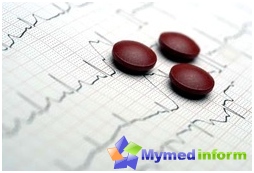
Treatment of hypertensive disease lies in constant control over the level of blood pressure and reception of drugs supporting hell in a stable state. There are several groups of drugs whose action is based on various pressure reduction mechanisms.
B-blockers. These drugs reduce heart rate, reduce peripheral vascular resistance. B-blockers (Atenolol, Metoprolol, Locases, Vicky and DR.) prescribe in bradycardia (very rare heartbeat, less than 55 urads per minute), bronchial asthma, obstructive bronchitis.
IAPF - angiotensin-converting enzyme inhibitors. These drugs block the production of renin (generated by the kidneys), which causes an increase in hell. These drugs (Kopoten, Methihod, Enalapril, Ttitats, Moex, Preshaum, Cylaped, Spirapril and DR.) contribute to the reverse development of the left ventricular heart hypertrophy, the expansion of coronary vessels, improvement of peripheral blood circulation.
Calcium antagonists. Their general principle of operation - blocking calcium channels in the walls of the vessels, an increase in the lumen of the vessels, and, as a result, decreased blood pressure. Corinthar (nifedipine), amlodipine, felodipine - affect the vessels, and drugs like verapamil act directly on the heart. The side effect of these drugs is headache, dizziness, swelling.
Diuretics - diuretic products that reduce the volume of fluid in the body, which leads to a decrease in blood pressure. Hypertension uses hydrochlorostiazide, indapamide, clopamide, chlorodiazide - these funds not only reduce blood pressure, but also save potassium in the body, which is usually washed away when receiving other types of diuretics.
For the treatment of hypertension, the doctor will first of all, will advise the patient to change the lifestyle: refuse cigarettes and alcohol, to eat weakly salted products, avoid stressful situations. If hypertension is well amenable to treatment, the doctor prescribes one drug (this is a B-blocker, IAPF, or a diuretic). If the pressure is not reduced under the action of one drug, the doctor prescribes a combination of two or more drugs. Our site strongly recommends: Do not attempt yourself, «Present method», pick up the drug to reduce blood pressure, so you just hurt your health. Only a cardiologist will pick up the medicine you need.
Get rid of hypertension forever - it is impossible, because the walls of the vessels of the years adapted to Increased pressure, and drugs we can not return their former condition. But if you constantly monitor your blood pressure, you can notice the manifestations of hypertension in time and take action.



